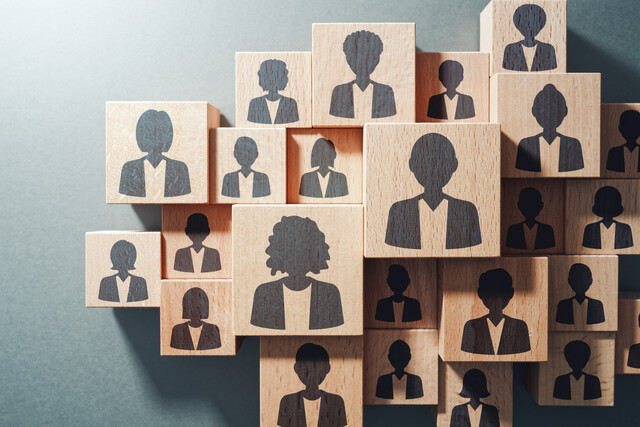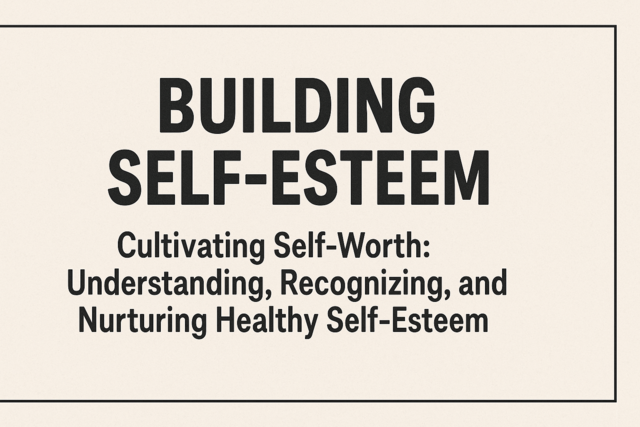To present factual data as to how, over the course of time, marriages have changed, we must first define marriage, although the definition is subjective based on one's views on the subject.
In ancient Greek times, there was a legend perpetuated by the famous philosopher Plato. It said that at one time a being, who possessed parts both male and female, offended the gods. As punishment, this being was divided into equal parts, male and female halves. Since then, men and women continue to search for their "other half" as a way to feel complete. When they find their missing part, they are rebound in the institution of marriage.
In the Bible, the book of Genesis takes its own tact on the subject, stating, "God has created man in his own image, in the image of God he created him; male and female he created them. And God blessed them and said to them, 'Be Fruitful and Replenish the Earth.'"
During the 19th century, the French writer Louis de Bonald, instrumental in laying the groundwork for modern social science, defined marriage in this way: "It is a potential society, becoming an actual society only with the birth of the first child." From his vantage point, the sole purpose of marriage was to produce children.
Apparently dating back literally centuries ago, the idea of marriage was borne out of a need to create a secure environment in which the perpetuation of a particular species could be facilitated.
Marriage, in past eras and to some degree still to this day, was viewed to be a sanctimonious institution. It was, in essence, a forum for safeguarding a system of rules, passing down property and other inheritance-related matters, and preserving the longevity of bloodlines.
An example of how ancient Hebrew law addressed the issue of "keeping it in the family" was that it required a man, should his brother pass away, to marry his widow.
In many periods of yesteryear, because of women's secondary status and the need for men to perpetuate their bloodline, marriages became something of a business transaction in which men would, in some countries, pay a dowry or lump sum of money or other desirable form of payment, such as property or business opportunities, to the bride-to-be's father in exchange for permission to marry his daughter.
Further compounding the emotionless union, such marriages tended to be arranged by the bride's family. Once the girl reached a certain age, often 16 or 18, the family would begin to review the list of possible suitors that lived in the town. Typically, matches were based on idealized economic or social status of the future groom, whereby the female's lure was her family background or breeding and suitability for marriage.
Though we speak of arranged marriages as a thing of the past, in some cultures, especially those in India, the Middle East, Asia, and Africa, such unions are still much the norm.
C. Modern-day Marriages and Families
In the United States, during the 20th and 21st centuries, marriage served a beneficial purpose of implementing a method for keeping societal immoral conduct in check. Folks from traditional stock and conservative values cherished the idea of marriage and were committed to their partner for their entire life, Religious affiliations were a part of their union. They made efforts to nurture their relationship, thereby strengthening the marital bond between them and being able to pass along similar values to their children. They held strong convictions where the sanctity of their marriage was concerned.
Therefore, when looking to see how the concept of marriage has changed from its more archaic counterparts, we draw upon an old-fashioned saying: "The more things change, the more things stay the same."
That saying comes into play where the state of modern marriages is concerned in that, although Americans are viewed as being uniquely committed to individualism, personal autonomy, and the cultivation of the self, the basic reasons for marrying in the first place have remained fairly consistent over time.
Many people hold the view that regardless of how or why people enter into matrimony, marriage is a bond between two people that involves responsibility and legalities, as well as commitment and challenge. That concept of marriage has not changed through the ages.
Aside from a life partner, individuals still aspire to have great wealth, make significant strides in the social sector, bear healthy children, and raise them to be well-mannered and well-educated. These desires have not changed.
What has changed, however, is that in modern-day America, as well as in many other parts of the world, marriage has become a reflection of personal choice irrespective of the family's beliefs on the subject or their desire to play a role in who may be joining the family.
This then opens the arena for potential partners to be of the same sex, different ethnic or racial backgrounds, varying social and economic classes, and of unequal educational orientations.
Furthermore, it also permits individuals to form marriages based upon such novel ideas as love, honor, and respect. Many of these notions were not always considered in the past, when marriage was still considered more of a business arrangement.
|
Note: It should be pointed out that love and marriage are not synonymous. There have been and will continue to be marriages in which love is lacking or even completely absent.
|
D. Marriages and Families: Most Notable Changes
Most importantly, perhaps, what has changed within the marital framework is to dispense with the sense of obligation and duty. In the past, many couples got together and stayed together out of a belief that that is what they were supposed to do. Divorce was not the available option that we have today. Current statistics show that approximately one half of all marriages in the United States end up in divorce.
Within the modern marriage structure, some social scientists came up with a tri-pronged system for classifying the primary types of marriages that exist, wife as equal partner, junior partner, or complement. Distinctions among the three categories can be made by analyzing the economic provider or money earner responsibilities, household duties, and decision-making processes.
The U.S. government first acknowledged the idea of a true partnership in 1948 when, for taxation purposes, it allowed married couples to split their income and take tax deductions for having a spouse and family.
Today the U.S. government is contending with another major issue where public unions are concerned: that of the same-sex marriage, also known as gay marriage.
Beginning in the early 1990s, the social movement to obtain the same legal protections for same-sex marriages as heterosexual couples enjoyed gained momentum and finally came to the forefront of both the public and the nation's political forces.
A complex issue that involves a great deal of federal rhetoric where the definition of a marriage is concerned, the bill to recognize same sex marriages did not pass by a sufficient margin in the United States to become law. Some people believe marriage should be between a male and female, whereas others view it as a union between two persons committed to each other.
|
In such states as Connecticut, Vermont, New Jersey and California, lawmakers specifically created legal unions that, while not officially marriages, do entitle the parties to all of the rights and responsibilities of marriage under state law to same sex couples.
To a slightly lesser degree, Maine, Hawaii, and the District of Columbia have created legal unions for same-sex couples with some, although not all, of the provisions of heterosexual marriages.
|
Part of the debate as to whether we should acknowledge same-sex marriages in the same vein that we do heterosexual unions is that the latter can conceive a child whereas in the former pair cannot.
Because many conservative groups still view the institution of marriage as one that is sacred, they consider this inability to have a child without outside resources a tremendous and unnatural deviation from the original concept.
E. The Healthy Marriage Initiative
As part of both a reform of the welfare system and a concerted effort to strengthen the bond of matrimony, in the federal government's U.S. Department of Health and Human Services, in 1996, a division was formed to focus on the cultivation of healthy marriages both through service protocols and education formats. The division is called the Healthy Marriage Initiative (HMI).
Of the work that the department performs, the HMI's assistant secretary for Family and Children, Wade F. Horn, Ph.D., stated: "Our emphasis is on healthy marriages, not marriage for the sake of marriage, not marriage at any cost, but healthy marriages that provide a strong and stable environment for raising children. It is about helping couples who choose marriage for themselves to gain access to the skills and knowledge necessary to form and sustain healthy marriages."
Striving to ensure partners are more than just compatible, the HMI offers a roster of services, including education, information, and counseling.
In February 2006, President George W. Bush commended the work of the organization while stressing the importance of healthy unions by stating: "To encourage marriage and promote the well-being of children, I support the Healthy Marriage Initiative's work to help couples develop the skills and knowledge to form and sustain healthy marriages. My administration will give unprecedented support to strengthening marriages. Many good programs help couples who want to get married and stay married."
The HMI supports the stance that marriage is an essential institution of a successful society that promotes the interests of children.
Documenting this idea, extensive HMI studies show that children who grow up in healthy, married, two-parent families do better in a host of outcomes than those who do not. Further, many social problems affecting children, families, and communities may be prevented should children grow up in healthy, married families.
|
Specific social science findings presented by the HMI included:
- On average, married couples tend to build more wealth than singles or cohabiting couples, thereby decreasing the possibility of their children growing up in poverty.
- Children who live in a two-parent, married household have been shown to be physically healthier than children of single parent, unmarried households.
- Children of two-parent, married households tend to have lower future instances of committing or being involved in criminal activities.
- Children of two-parent, healthy married households are more likely to attend college.
- Children of two-parent, healthy married households are more likely to succeed academically.
- Children of two-parent, healthy married households are less likely to abuse drugs or alcohol.
- Children of two-parent, healthy married households are less likely to be sexually active as teenagers.
|
F. Marriage and Family Poem
Poet Wendell Berry of Kentucky, writing on marriage and family, shows us how marriages and family transcend beyond their own formations to impact that of the community and, in a larger sense, that of society as a whole.
Marriage is more than a bond between two people. It also exists to bind the couple as parents to children, families to the community, the community to nature. The new bride and groom say their vows to the community as much as to one another, and the community gathers around them to hear and to wish them well, on their behalf, and on its own. The very health and future of the community depends on the successful endurance of these vows. They bind the lovers to each other, to forebears, to descendants, to heaven and earth. Marriage is the fundamental connection without which nothing holds.





























